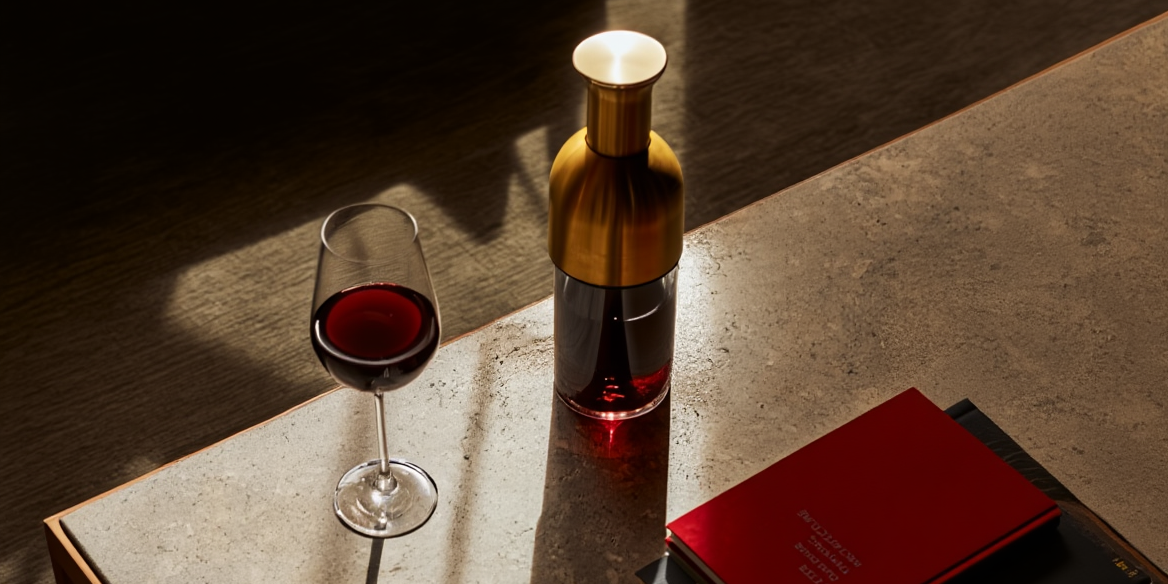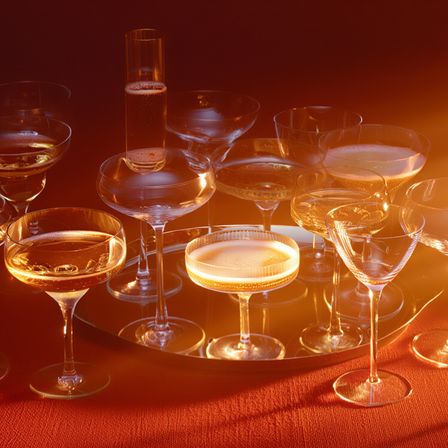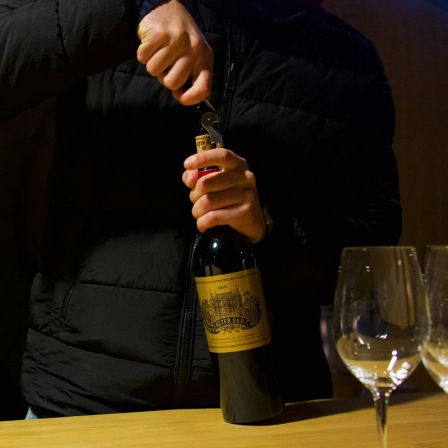- Advice
Pour judgement: Why, when, and how to decant your wine
It’s the greatest wine gadget of all, says Tom Gilbey — but should be used with caution.
- Words By Tom Gilbey

The decanter is my favourite bit of wine kit, and without doubt, the most fun, most practical and most beautiful wine gadget there is to buy.
My first decanter came from the Portobello Road. I’d started my little wine collection with a bottle of £6.99 Saint Emilion from Safeways and added a few other beauties to it, stashing them away in a dark, cool cupboard, hoping that they’d turn in to the beautiful swans I’d been dreaming of — and I now had something to show them off in.
It worked a treat. The decanter accentuated the colour and richness of the wine and made my thoroughly ordinary Saint Emilion a great deal less ordinary. I still have that decanter. In fact I’ve got two of them. They weigh a tonne, look fabulous — quite retro with their thick glass and wide silver necks.
And they work, too — they could make even Jam Shed look like a good wine.
But why, when, and how should you decant your wine?
Some of the ‘why,’ perhaps, we’ve already hinted at. Decanting makes a wine — or actually, a table — look the bees knees. You can hide all sorts of dreadful labels, including your supermarket-own plonk (which are often actually really good, contrary to appeareances) and generally make your dining set up look 30% more swish with a jazzy decanter.
But there’s also a couple of proper wine reasons. Firstly, we decant wine to give it oxygen. Many wines, particularly young reds, benefit from a bit of contact with oxygen. It softens the tannin and accentuates the fruit. My second wine reason is if the wine’s thrown a sediment. This is mainly for older, more mature red wine. The tannins in young red solidify over time and in an old wine (fifteen-years plus) this sediment could be significant — and I’d rather drink my wine than eat it.
EXPLORE WINES MADE FOR THR DECANTER
But it’s not always that simple. I was once lucky enough to drink a mega bottle of red burgundy in a beautiful restaurant in Beaune called Le Cep. I was 32, travelling with my boss, a great bon viveur, the life and soul of the party. He’d been ‘off the grog’ for five years having ‘had his allocation early’ and he’d ordered this special bottle for me. He’d taste it and spit it out; I’d taste it and drink every drop. Along came madame, the maître d’ — larger than life and twice as loud with a bottle of Gevrey Chambertin 1985. It was 2004. Madame presented the bottle to my boss, decanted the wine at the table and, five minutes later, returned to pour our glasses. Really good, mature Gevrey Chambertin should be rich and opulent with plenty of ripe, red fruit mixed with a whack of spice and some earthy notes. It’s sometimes described as an iron fist in a velvet glove.
It took maybe five minutes for the wine to come alive. Gradually the strawberry, red cherry and plumb notes emerged. Then came the wet leaves, the earthiness and some smoky spiciness.
It’s one of the most vivid wine memories I have — that smell of the wine, the restaurant and then the rich coq au vin when it arrived. Totally mouthwatering and delicious. But within 20 minutes the party was over. The wine, having had 30 minutes of oxygen, fell to pieces. The power and persistence had subsided to leave a muted red wine with little-to-no energy.
This is a cautionary tale. Be very careful decanting an old wine, particularly an old Pinot Noir from Burgundy. Yes it might have thrown a sediment, and thus might need to be decanted. But once it’s in contact with oxygen, it’s live — so don’t hang around to enjoy it.
The ‘how’ of decanting, on the other hand, is really very simple. If you're decanting for my first two reasons — o make it look great and or to give the wine more oxygen — you can be pretty robust with the bottle. Off with the top and in with the wine and you’ll see an improvement with many wines three hours later. But in the case of older wines, like that Gevrey Chambertin, you’ve got to be a bit more careful. Mature wine should be stood up for a good few hours— ideally a day — then gently poured into the decanter. Be very careful to stop before you get to the sludge. To see the sludge, a candle used to be the essential kit. But now you can use the torch of your mobile phone underneath the wine — it’s very effective.
I guess the only wines I would avoid decanting are those that wouldn’t look better for it. Rosés look much prettier in their bottles. And whites tend to look far too much like a sample from the local hospital.
Come on in the Chablis lovely, Your new home of drinks.
Stay up to date with all the latest from House Of Decant.





